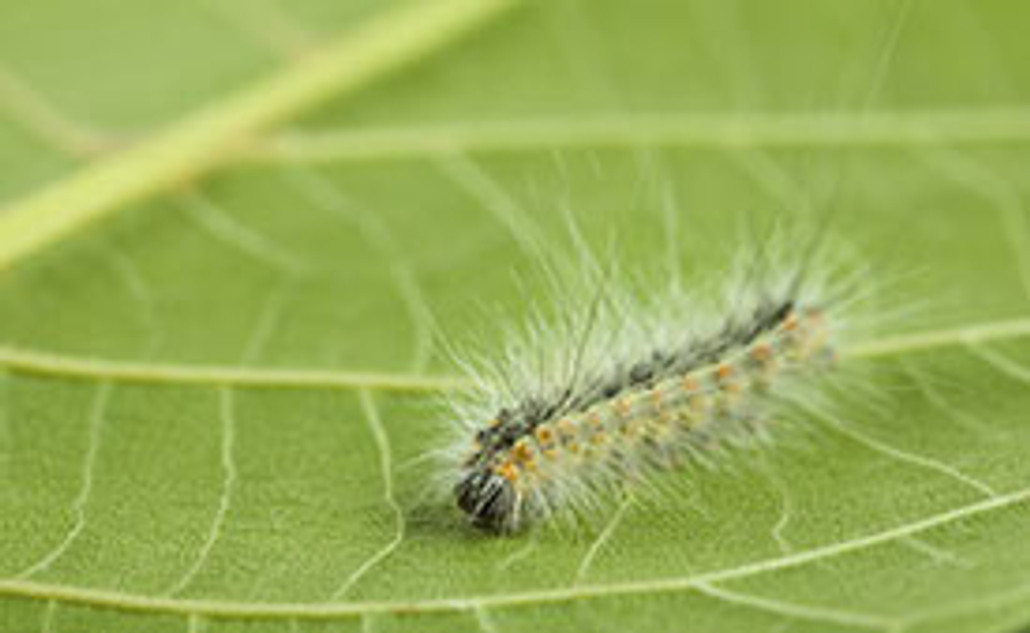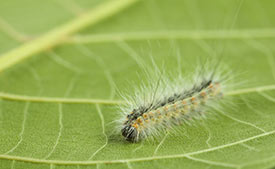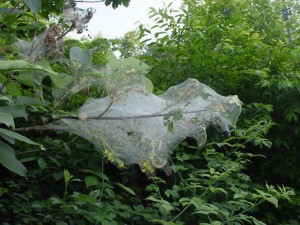
Horticultural Bulletin: The Fall Webworm
Posted by Grange Co-op on 30th May 2012
Horticultural Bulletin: The Fall Webworm
 Hyphantria cunea Caterpillar
Hyphantria cunea Caterpillar
The fall webworm comes from a North American native moth (Hyphantria cunea), family Arctiidea. The moth lays egg masses in the early spring, which can hatch and be responsible for as many as 3 generations in one growing season in Southern Oregon. The severe population explosion experienced in our area in 2011 was a bit of a surprise, as the cycle of Web Worm infestations is generally 4-7 years, with 2-3 successive years being common, then natural control agents will usually reduce the populations.
Good News! Though the webbing and defoliation caused by the feeding of the Fall webworm is unsightly and alarming, the trees usually recover well, especially if basic control measures, as we have listed below, are employed at the first sign of worm activity. Please see our Grange Co-op Garden Center staff for guidance in developing your webworm control strategies!
Shop for Lawn & Garden Supplies on grangecoop.com.
1. Mechanical Control: Remove Nests – Small nests can be pruned out of small to medium trees. Watch your trees carefully early in the season (especially if you had infestations the previous season). Remove nests promptly upon discovery. Rather than attempting to burn in fire season – cut infested twigs or branches, place them in black plastic bags, then place bag in direct sun for 48-72 hrs. : the worms will expire.

2. Biological Control: Encourage Predators – Over 80 species of parasites and predators for webworms have been identified in North America. Among the most effective are Yellow Jackets, Paper Wasps, birds, stink bugs and parasitic flies. If you delay destruction of wasp nests until August, you will have the best chance of getting their aid in controlling webworm in your trees.
3.Biological Control:Apply Bacillus thuringiensis (Bt). Bt is available at Grange Co-op Garden Centers. It is quite effective against webworms if it is applied when the larvae are small. Thoroughly cover leaves next to nests. As these leaves are incorporated into the nest and eaten, the Bt will be ingested, leading to the demise of the larval worms within 24 to 48 hours.
4. Chemical Control – Standard Insecticide Sprays – are best left to licensed, commercial spray applicators with training and equipment to safely use chemicals overhead. Repeat sprayings may be required if additional generations occur.
5. Chemical Control – Use Systemic Insecticides – Useful in tall trees where extensive nests may occur which are difficult to spray. To be most effective, this must be done early in spring, just as the trees are leafing out. Please consult with the staff in Grange Co-op’s Garden Centers for the best recommendation on the proper systemic to use in this situation.
6. Mechanical Control: Clean Infestation Site – In fall, rake thoroughly around any trees infested in the season. Use high pressure water spray to clean any old nests and damaged wood from the trees.
